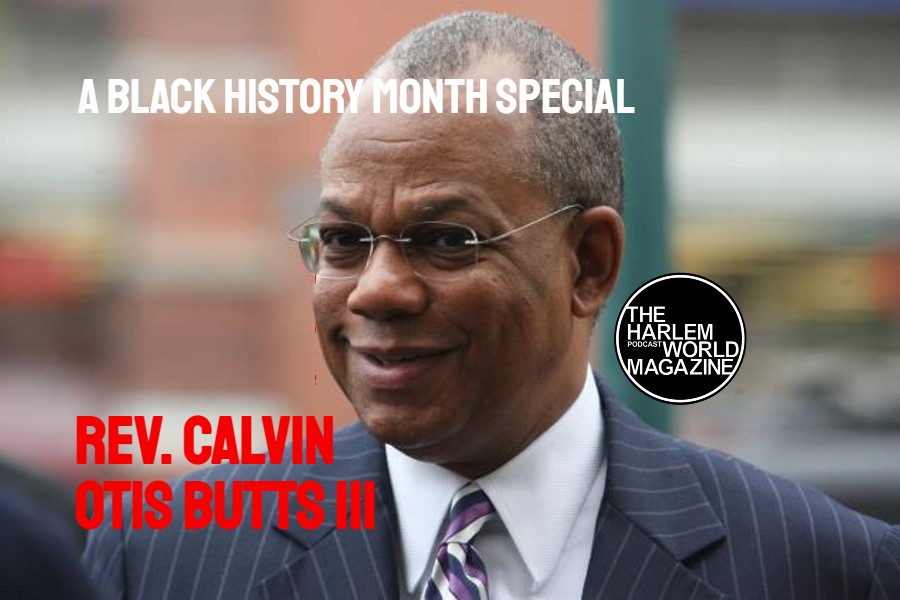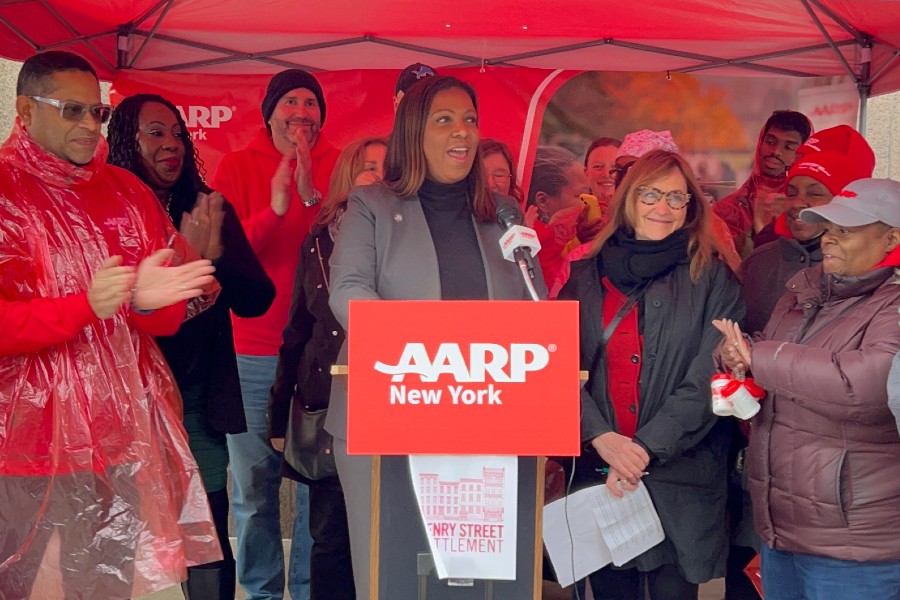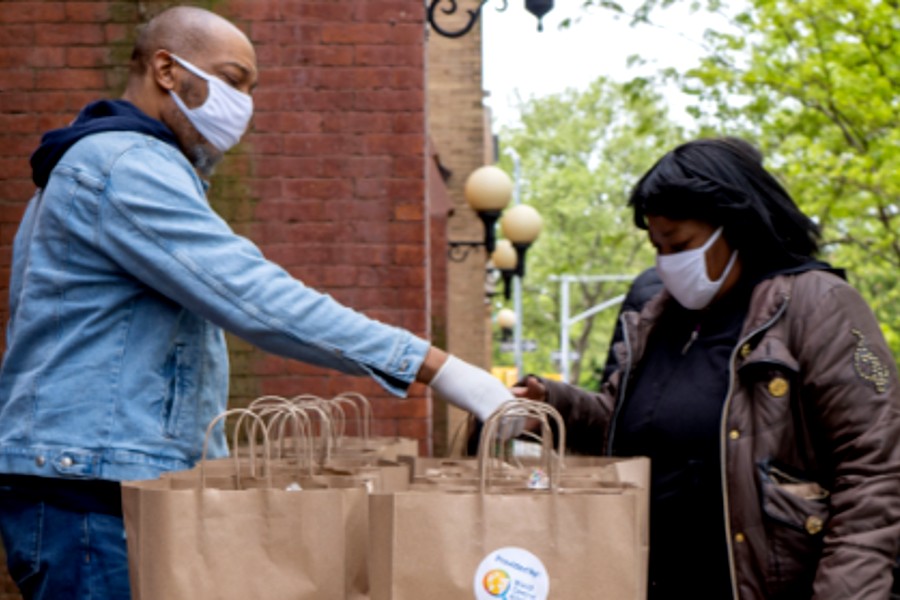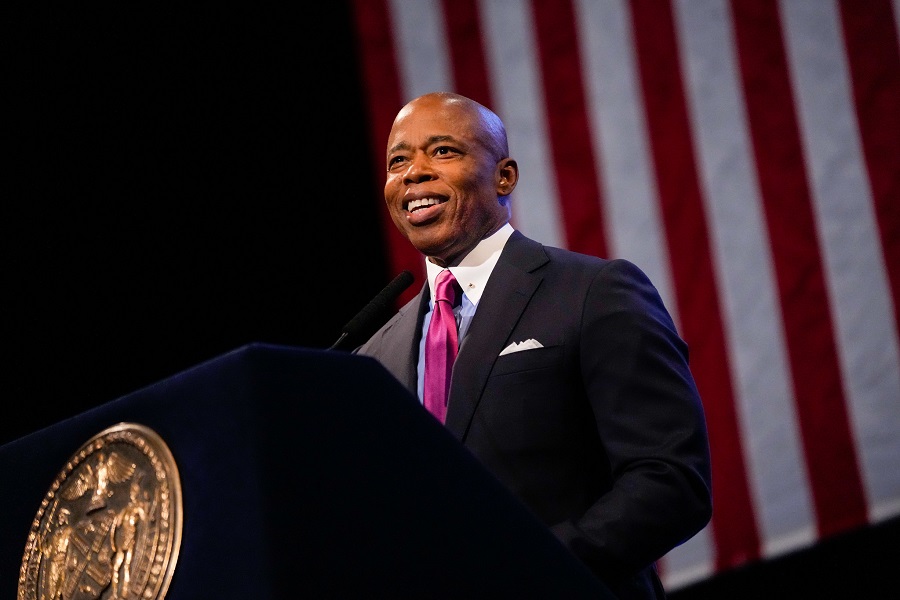 The Hotel Theresa, located at 2082-96 Adam Clayton Powell Jr., Boulevard between West 124th and 125th Streets in Harlem, NY, was, in the mid-20th century, a vibrant center of African American life in the area and the city.
The Hotel Theresa, located at 2082-96 Adam Clayton Powell Jr., Boulevard between West 124th and 125th Streets in Harlem, NY, was, in the mid-20th century, a vibrant center of African American life in the area and the city.
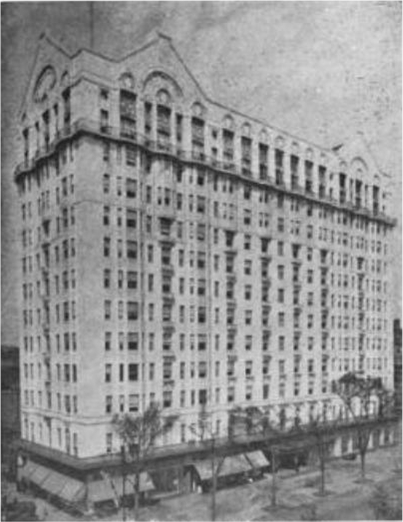 The 13-story hotel was built in 1912-13 by German-born stockbroker Gustavus Sidenberg (1843–1915), whose wife Theresa Sidenberg – the hotel is named after, and was designed by the firm of George & Edward Blum, who specialized in designing apartment buildings. In 1892, Sidenberg had purchased the old Hotel Winthrop on 7th Avenue between 124th and 125th streets in Harlem. The hotel, which was known in its heyday as “the Waldorf of Harlem”, exemplifies the Blum’s inventive use of terra-cotta for ornamentation, and has been called “one of the most visually striking structures in northern Manhattan.”
The 13-story hotel was built in 1912-13 by German-born stockbroker Gustavus Sidenberg (1843–1915), whose wife Theresa Sidenberg – the hotel is named after, and was designed by the firm of George & Edward Blum, who specialized in designing apartment buildings. In 1892, Sidenberg had purchased the old Hotel Winthrop on 7th Avenue between 124th and 125th streets in Harlem. The hotel, which was known in its heyday as “the Waldorf of Harlem”, exemplifies the Blum’s inventive use of terra-cotta for ornamentation, and has been called “one of the most visually striking structures in northern Manhattan.”
 The Hotel Winthrop which sat on the spot of the Theresa before it was torn down in the early 1910s, deemed a bit inadequete for the growing neighborhood. (Courtesy Museum of the City of New York).
The Hotel Winthrop which sat on the spot of the Theresa before it was torn down in the early 1910s, deemed a bit inadequete for the growing neighborhood. (Courtesy Museum of the City of New York).
The building, now an office building known as Theresa Towers, was designated a New York City landmark in 1993 and was added to the National Register of Historic Places in 2005.
The 13-story hotel – with its striking white terra cotta facade with ornamentation made specifically for the project and not pre-fabricated stock items, as was standard practice – opened in 1913 and was, until the construction of the Adam Clayton Powell Jr. State Office Building across the street in 1973, the tallest building in Harlem. It was primarily an apartment hotel, but also accepted temporary guest as well. In its early years the hotel accepted only white guests, but it was bought in 1937 by Love B. Woods, an African American businessman, who in 1940 ended its racial segregation policy.
Boxer Joe Louis was one of America’s most famous athletes in the 1940s and a frequent guest at the Theresa. Joe fought the German boxer Max Schmeling twice, both times at Yankee Stadium. Max bested Joe in the first match, but on the second go-around in 1938, Louis knocked out Schmeling in the first round. He enjoyed his win that evening at the Theresa, as thousands of fans gathered in front of the hotel and throughout the city in celebration.
The hotel had a two-story penthouse dining room which features views of Long Island Sound to the east and the Palisades to the west, as well as a bar and grill. In the 1940s and 1950s, the Theresa became a center of the social life of the black community of Harlem; it was then that it was known as “the Waldorf of Harlem.” The hotel profited from the refusal of prestigious hotels elsewhere in the city to accept black guests. As a result, black businessmen, performers, and athletes were thrown under the same roof. The building was also the location of such institutions as A. Phillip Randolph’s March on Washington Movement, the March Community Bookstore, and Malcolm X speaking to crowds in front of the Hotel Theresa — back when there was a Chock Full O Nuts on street level!the Organization of Afro-American Unity on the second floor created by Malcolm X after he left the Nation of Islam.
In 1960 Fidel Castro came to New York for the opening session of the United Nations, and, after storming out of the Hotel Shelburne in Midtown Manhattan because of the manager’s demand for payment in cash, he and his entourage stayed at the Theresa, where they rented 80 rooms for $800 per day. According to the New York Times, Castro felt that “Negroes would be more sympathetic” to his cause, and indeed he drew enthusiastic crowds of supporters, along with some protesters.
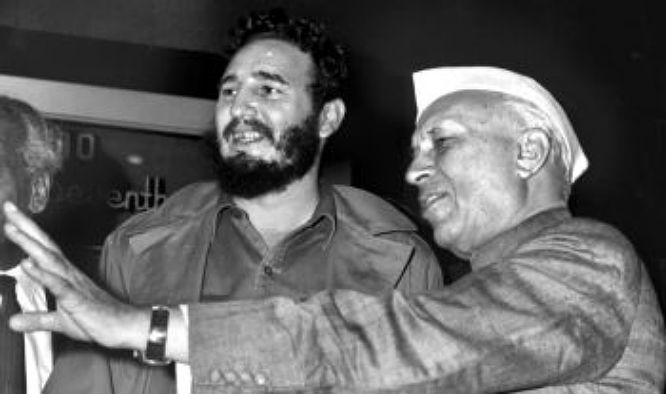 While Castro was there, he was visited by Soviet Premier Nikita Khrushchev, as well as by such luminaries as Malcolm X, poets Langston Hughes and Allen Ginsburg, Gamal Abdel Nasser, the president of Egypt, and Prime Minister Jawaharlal Nehru of India. Subsequent to Castro’s visit, other Third World leaders, such as Patrice Lumumba of the Belgian Congo, chose to stay at the Theresa.
While Castro was there, he was visited by Soviet Premier Nikita Khrushchev, as well as by such luminaries as Malcolm X, poets Langston Hughes and Allen Ginsburg, Gamal Abdel Nasser, the president of Egypt, and Prime Minister Jawaharlal Nehru of India. Subsequent to Castro’s visit, other Third World leaders, such as Patrice Lumumba of the Belgian Congo, chose to stay at the Theresa.
 In October 1960, John F. Kennedy campaigned for the presidency at the hotel, along with Eleanor Roosevelt and other leading figures in the Democratic Party.
In October 1960, John F. Kennedy campaigned for the presidency at the hotel, along with Eleanor Roosevelt and other leading figures in the Democratic Party.
 Ron Brown, who was the United States Secretary of Commerce in the Clinton administration grew up in the hotel, where his father worked as manager, and U.S. Congressman Charles Rangel (D-Harlem) once worked there as a desk clerk.
Ron Brown, who was the United States Secretary of Commerce in the Clinton administration grew up in the hotel, where his father worked as manager, and U.S. Congressman Charles Rangel (D-Harlem) once worked there as a desk clerk.
The hotel suffered from the continued deterioration of Harlem through the 1950s and 1960s, and, ironically, from the end of segregation elsewhere in the city. As African Americans of means now had alternatives, they stopped coming to Harlem. The owners had not upgraded or modernized the hotel in decades, and it was said to be “dowdy” at best.
New owners began converting the building to office space beginning in 1966, and the hotel closed in 1967. The building was renovated and restored, with the exterior largely kept as it had originally been, instead of being replaced with an aluminum and glass facade, an alternative which had been considered. The building reopened in 1970 as Theresa Towers, though a sign with the old name is still painted on the side of the building, and the old name is still commonly used. As well as housing commercial and professional tenants, it serves as an auxiliary campus for Columbia University’s Teachers College and the Touro College of Pharmacy.
Check out this video from the Bio channel with Harlem historian John Riddick:
Related articles

Become a Harlem Insider!
By submitting this form, you are consenting to receive marketing emails from: Harlem World Magazine, 2521 1/2 west 42nd street, Los Angeles, CA, 90008, https://www.harlemworldmagazine.com. You can revoke your consent to receive emails at any time by using the SafeUnsubscribe® link, found at the bottom of every email. Emails are serviced by Constant Contact










